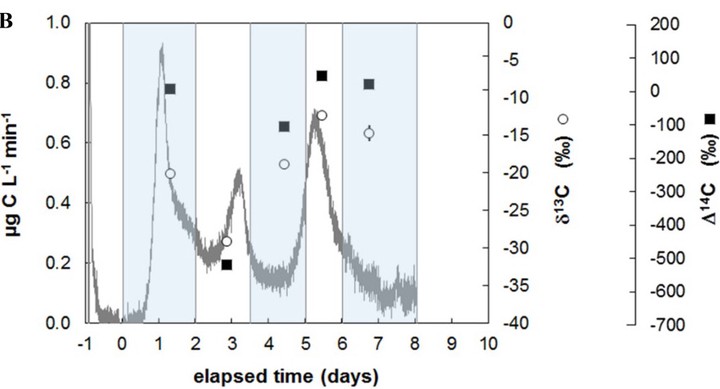
Abstract
Aquatic sediments harbour diverse microbial communities that mediate organic matter degradation and influence biogeochemical cycles. The pool of bioavailable carbon continuously changes as a result of abiotic processes and microbial activity. It remains unclear how microbial communities respond to heterogeneous organic matrices and how this ultimately affects heterotrophic respiration. To explore the relationships between the degradation of mixed carbon substrates and microbial activity, we incubated batches of organic‐rich sediments in a novel bioreactor (IsoCaRB) that permitted continuous observations of CO2 production rates, as well as sequential sampling of isotopic signatures (δ13C, Δ14C), microbial community structure and diversity, and extracellular enzyme activity. Our results indicated that lower molecular weight (MW), labile, phytoplankton‐derived compounds were degraded first, followed by petroleum‐derived exogenous pollutants, and finally by higher MW polymeric plant material. This shift in utilization coincided with a community succession and increased extracellular enzyme activities. Thus, sequential utilization of different carbon pools induced changes at both the community and cellular level, shifting community composition, enzyme activity, respiration rates, and residual organic matter reactivity. Our results provide novel insight into the accessibility of sedimentary organic matter and demonstrate how bioavailability of natural organic substrates may affect the function and composition of heterotrophic bacterial populations.
#